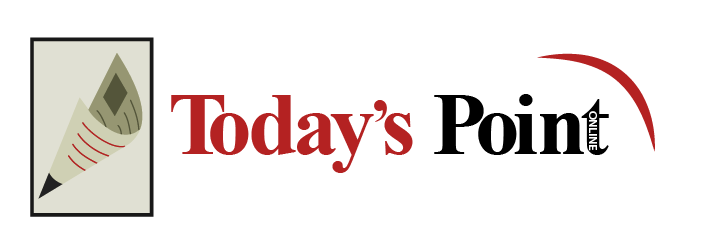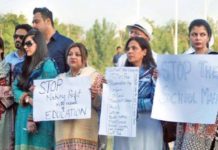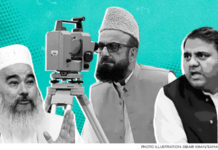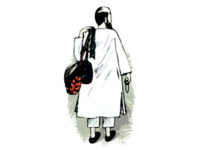Religious extremism has assumed horrendous proportions in our society, there can be no two opinions about this. During last few years, hundreds of people have fallen victim to the menace as the jihadis have taken upon themselves to establish a monolithic society by ridding it of all “evil”. The failure of the Swat deal reminds us that the jihadi ideology precludes tolerance of any dissent, difference or opposition as tolerating any ‘antithesis’ would constitute kufr.
Thus, according to that ideology, democracy and parliament are illegitimate being a western concept and institution respectively and thus an antithesis of the Islamic political system. The constitution, the legal system and all subordinate institutions which are based on democratic ideals are likewise branded as un-Islamic.
Such an ideology is obviously incompatible with the modern society, which is multiethnic, multicultural. In such a society, social order has to be based on a pluralistic philosophy—tolerance of religious and cultural differences within society permitting various groups to practise their distinctive cultures while cooperating in larger social, economic and political life. Pluralism also underlies democracy, which stipulates that people regardless of their ethnic or religious affiliations should be given equal rights and opportunities
The vision of Pakistan as outlined by its founder in the above extract was that of a pluralistic society in which full religious freedom would be granted to all communities, where the state would not discriminate on the basis of caste or creed and where cultural diversity would be reconciled with national unity.
Since Gen Zia had assumed power by unconstitutional means, he needed some principle to legitimise it. He found such a principle in religion—the “Islamisation” of society—and an instrument to carry it out in the clergy. Zia’s so-called Islamic measures increased the existing polarisations in society. They widened the chasm between Muslims and non-Muslims and between Shias and Sunnis. It was his regime which fathered the country’s most extremist religious outfit. In exchange for the cooperation of the clergy, the Zia regime extended them full patronage.
In breeding and nurturing religious militancy, the curriculum has played a lethal role. The pen is bloodier than the sword and this is perfectly applicable to our schooling curriculum. The curriculum offers negation, and hence repudiation, of doctrines, rituals and moral standards different from theirs. Those who profess a different creed or have a different moral standard are looked upon as an evil. Women who do not put on veil or men who do not have a beard are considered impious. Men and women who mix with one another are regarded as essentially wicked. Those who listen to music commit a grave sin. All such wicked or impious people have to be reformed—by the use of force if need be.
The education imparted in the educational institutions instead of inculcating in students a dispassionate quest for truth or at least enabling them to take to some socially useful profession, indoctrinates in them hatred for other creeds. The students are taught that only their creed is based on truth, whereas the rest are an incarnation of evil whose elimination is a most sacred duty of theirs. The reward of performing that duty, they are taught, is an everlasting life of pleasure in the paradise.
Most of the students owing to their impressionable age come to believe this stuff. Hence, when they leave their institutions, their hearts are filled with the strong desire to carry out their “sacred” duty. The curriculum also acts as a breeding ground to churn out sectarian propaganda in the form of inflammatory literature, which denounces followers of rival creeds as kafirs, who must either be coerced into conversion or exterminated.
It is easier to accept people like us than people different from us. But it does not mean that a society should shun all diversity and consist of only one race, creed or ethnicity. Rather all such diversity has to be appreciated, affirmed and accepted. This is the only sound approach in a multiethnic society like Pakistan. It is such approach that both the government and civil society should promote.
The view propagated by successive governments and even today by religious parties that Pakistan was meant to be a theocratic, monolithic state and a citadel of Islam needs to be corrected. As for madressahs, they as the breeding ground of religious militancy need a major surgery, otherwise the cancer of religious extremism would eat up the entire body politic.
in the early years of Pakistan when Mr Jinnah’s ‘Muslims will go to their mosques, Christians to their churches and Hindus to their temples’ speech was still ringing loud and clear, Students were not required to study radicalsed version of Islamiat. The principals of religion were taught in an enlightened tradition. Zia however left no stone unturned to achieve his mission of Islamising education.
He turened secular approach as ‘la-deeniat’ then one wonders, what kind of uniform curriculum is this where there is nothing for the minorities of this country?
The self-appointed custodians of our faith have presented an out of favour, national curriculum of Islamyat and it does discredit to the rational approach towards the minorities.
If the religious festivals of Muharram, Christmas and Holi are omitted from the Islamiyat curriculum, millions of teachers of Islam will call them infidels every year on the occasion of these festivals. Hindus will be considered traitors. This approach will give rise to even more religious and sectarian divide. It will become a source of toxicity and hatred in the society. Crime rates will increase and work ethics infinitely will take a nose dive.
Worse still, the society will be tightly knitted into a strong anti-Muslim sentiment. And it will get pretty hard to neutralise this negativity and show our youth the other side of the picture.
PTI government is backing madrassa’s radical Islamic curriculum to be made compulsory across the academic sector.
What is of great concern is the ‘madressah-isation’ of our education, as Prof A.H. Nayyar so aptly put it, in the name of ‘uniformity’ in the Single National Curriculum (SNC). According to Prof Nayyar, big chunks of the Islamiat curriculum have been lifted from the madressah’s dars and inserted in our mainstream school curriculum. That includes reading the entire Quran with translation in Grades 1 to 5 as well as memorising a number of hadith in Arabic with their translation.
This period coincides with the age in the child’s life when her cognitive and language skills are developing symbiotically.
This is the age when it must be ensured that the child’s critical faculties are allowed to grow by giving the child freedom to explore her environment and giving a free rein to her curiosity. If what we hear about the SNC is true, the child will become a good rote learner and would be discouraged from asking questions that would in all likelihood be declared ‘blasphemous’.
‘Teaching discrimination in Islmiyat curriculum will increase the likelihood that violent religious extremism in Pakistan will continue to grow, weakening religious freedom, national and regional stability, and global security.
Religious minorities are often portrayed in the curriculum as inferior or second-class citizens who have been granted limited rights and privileges by generous Pakistani Muslims, for which they should be grateful.
Hindus are repeatedly described as extremists and eternal enemies of Islam whose culture and society is based on injustice and cruelty, while Islam delivers a message of peace and brotherhood, concepts portrayed as alien to the Hindu.
The Islamic curriculum does not contain many specific references to Christians, but those that do exist seem generally negative, painting an incomplete picture of the largest religious minority in Pakistan.
There is also the challenge of forging a consensus among the multiple fiqh and schools of thought if fissures are not to be widened further. With this massive Islamisation of the curriculam, one can only ask, where will the non-Muslin minorities go?








